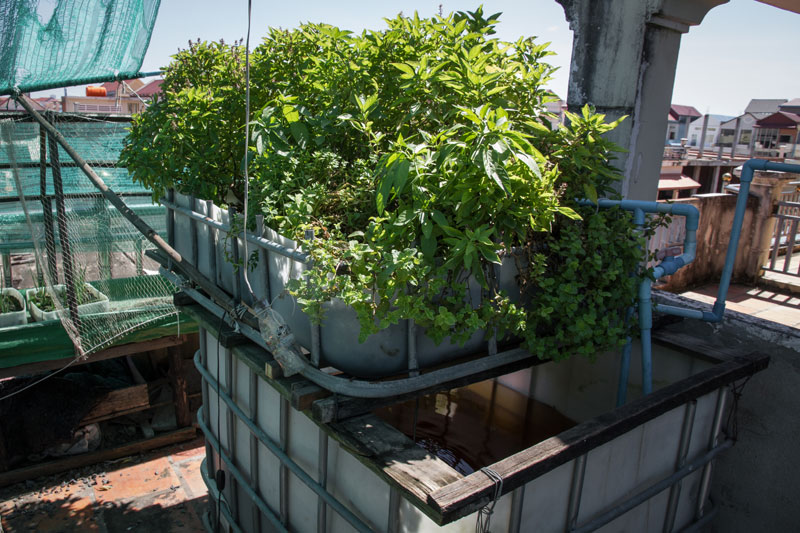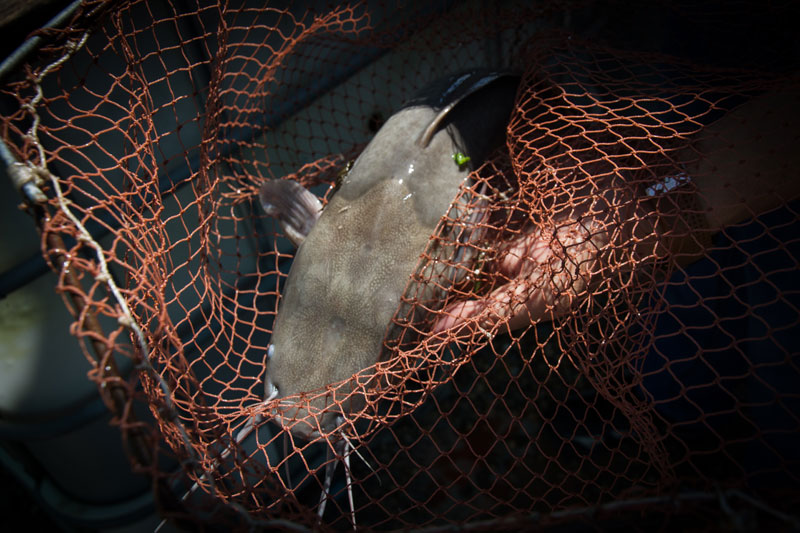TAKHMAO CITY, Kandal Province – Man Sophal unzipped a plastic tarp covering a metal structure in front of his villa, revealing rows of perforated PVC pipes from which a variety of cabbage and lettuce sprouted.
This is Kannika Farm, where the crops grow not from soil, but from a continuous supply of nutrient-rich water pumped through the pipes in the homemade greenhouse that cost Mr. Sophal $2,000.

“The most important thing is to keep the plants cool and humidified,” the 42-year-old entrepreneur said. “The U.V. [-resistant] plastic cover protects these plants from the sun’s heat, rain and insects. The rain can damage the nutrient-rich solutions.”
The hydroponics system does away with many of the hassles of traditional farming while allowing vegetation to thrive in a confined urban setting, using only the electricity needed to power a small pump, Mr. Sophal said.
Since he first turned on the taps of his contraption in 2011 after taking a short course on hydroponics in Thailand, Mr. Sophal’s urban farming experiment has gone from a pet project to a full-fledged enterprise.
Every two weeks, he trains between eight and 20 people in how to set up and maintain hydroponic greenhouses. He charges between $300 and $5,000 to install the systems himself.
Over the past two years, he has built more than 100 small-scale hydroponics systems on rooftops in Phnom Penh.
But Mr. Sophal’s methods are only one of the ways city dwellers are getting in on the cutting edge of farming.
Khan Chandara, 29, a former assistant lecturer at the Royal University of Agriculture in Phnom Penh, set up an “aquaponics” system—combining hydroponics with aquaculture—to grow herbs on the rooftop of his apartment building in the capital’s Dangkao district in 2011.
Though Mr. Chandara had to dismantle the system a few months later, upon heading to the U.S. for a master’s degree in fisheries and aquaculture, it is once again up and running.
Mr. Chandara raises catfish in a tank hooked up to a hydroponics system. The waste and bacteria that accumulates in the water, though toxic to fish at high levels, helps the plants grow. As the plants absorb nutrients, filtering the water, it circulates back into the fish tank.
“The main components are fish, plants and batteries. If one of these components fails, the whole system fails,” Mr. Chandara said.
Given the same amount of space, he said, “the [aquaponics] farm can produce a crop yield seven times higher than a traditional farm.”

Both Mr. Chandara and Mr. Sophal said that if more farmers adopted their modern cultivation methods, the country’s agriculture industry would be more stable and productive.
Hydroponics, Mr. Sophal said, “helps to reduce labor costs. Farmers can also control their farms, unlike those who farm on land and face problems such as floods…and insects.”
But with the high cost of setting up the systems, along with the prohibitive prices one would have to charge consumers in order to turn a profit, convincing traditional farmers to make the switch is not easy, said Hean Vanhan, deputy director-general of the Agriculture Ministry’s general department of agriculture.
“Ordinary farmers try to reduce spending to increase benefits. These [modern] methods require a lot of money,” he said.




